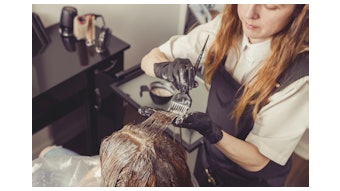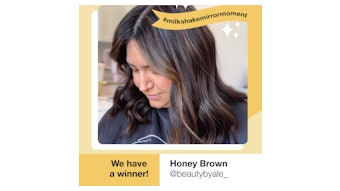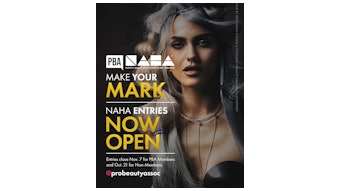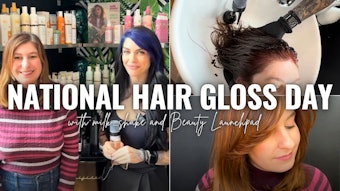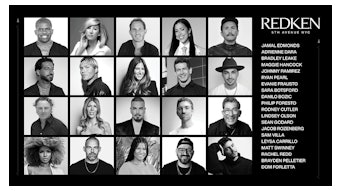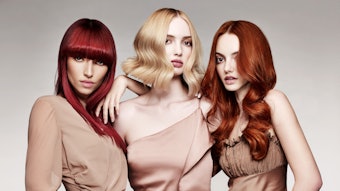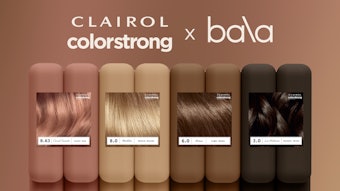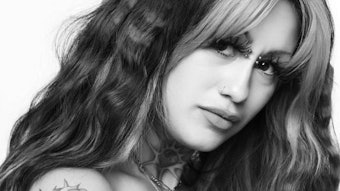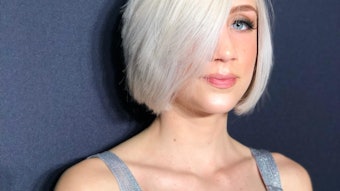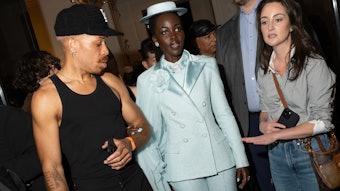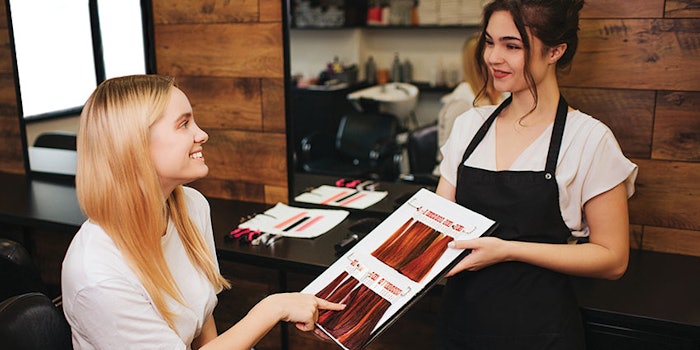
Haircolor myths: They can twist client understanding and even trip up colorists from time to time. And while the advent of the Internet can be seen as a force for good—it can, after all, help quell client curiosity about hair dye as well as provide infinite inspiration—it can also spew misinformation unchecked. “[Clients’] belief in a myth may create false expectations about their color service leading to dissatisfaction with their results,” warns Joanne Rempel, Eufora color development manager. Your job: Disprove myths delicately. “It’s important to educate clients on the facts, but do so in a professional manner in a way that they’ll understand. Sometimes stylists overcomplicate matters for clients,” explains Amy Spencer, Malibu C artistic team member and educator. Beauty Launchpad asked three top color pros to dismantle dye lies so that you can help spread hair hue truth simply.
Myth #1: Sub-Scalp Bleaching
Your client swears that her previous stylist’s highlights lasted longer than yours because he placed lightener in the hair follicle. “This is definitely untrue. Lightener only works on the exposed hair. Some stylists could definitely get foils closer to the scalp than others, but any highlights are definitely on the outside of the scalp,” Rempel says. Carefully clarify that lightener is unable to penetrate into the hair follicle, and therefore can’t lighten hair developing in the follicle. Rempel advises explaining to clients the benefits of taking smaller sections and a finer weave to allow you to get closer to the scalp area and, if correcting a fellow colorist on this myth, advising her on how she can improve her foil work.
Myth #2: The 24-Hour Post-Color Wash Rule
We’ve all heard it: Don’t wash your hair for 24 hours after a color service. Otherwise, as the tall tale goes, you’ll strip away some of the vibrant color. “The truth is you can wash your hair after the color is processed and it won’t be harmed,” shares Sonya Dove, Wella Professionals global creative artist and Ulta ProTeam member, adding, “Now, shampooing too often can certainly strip the oils from hair, so be aware!” She notes that haircolor technology advancements make this old wives’ tale simply that: a myth worth debunking. “I always suggest clients take home color care products to enhance their color and stop it from eventually fading,” Dove says.
Myth #3: Bleach Drives Direct Dyes Deeper into Hair
This myth has long been held by stylists, but Spencer believes there’s no time like the present to debunk it as it affects proper formulation for corrective color. “Lightener and direct dye have the same charge, so when you use a traditional lightener on direct dye, it has a similar reaction as putting two ends of a magnet together. They repel each other, causing the dye to spread out,” she says. In order to hammer the idea home, she recommends showing colorists how lightener and direct dye work via visuals, like a photo or video.
Myth #4: Haircolor Causes Irrevocable Damage
“Damage is a harsh word,” Spencer says. While she admits haircolor does cause oxidization—and over-oxidization can damage hair—current technologies allow colorists to safely add color, shine and dimension sans harm. To better ensure hair integrity, Spencer suggests proper prep pre-color to help decrease stress on hair, as well as using bond builders to rebuild disulfide bonds during processing. “I like to educate clients on the science behind it without getting too technical,” she says. Spencer also recommends posting before and after visuals of color to show how color services can actually condition, gloss and leave strands stronger as a way to help demystify this myth.
Myth #5: Henna-Colored Hair Can’t Be Lightened
The pros differ on their assessment of this myth, though they do agree that Henna-colored hair can be lightened to some degree. First, have a thorough consultation with your client, asking about frequency of use and whether the Henna includes mineral salts in the formulation. “Not all Henna is created equal,” Rempel warns. She notes that quality and ingredients in Henna formulation differ, and that the mineral salts found in many Henna brands make total removal difficult and, in some cases, impossible. Rempel refuses to remove Henna with mineral salts as the chemical reaction with color or lightener can cause severe damage to hair. “I tell clients the truth as I know it. If they insist on wanting something done, I just say no and tell them to find another stylist,” Dove agrees.
Spencer, on the other hand, has found success removing Henna after prepping the hair with Malibu C Color Disruptor and CPR, and even teaches a class devoted to this subject. However, all pros do concur on this integral step: They insist that Henna removal shouldn’t be attempted without a test strand first. “The telltale signs of mineral salts may be heating of the hair strand, smoking and damage or breakage,” says Rempel. Whatever you decide, make sure to have clients sign a release form in advance, and explain the risk involved with removal.
Myth #6: Haircolor Responds Better to Dry Hair
Wet, damp or dry hair: Which is best for haircolor application? It largely depends on what the manufacturer directions say, Dove concedes. “Each brand varies—even the product lines within a brand vary!” she stresses. Dove offers this example: “At Wella, Color Touch demipermanent needs to be put on clean, damp hair because the dampness helps porosity and how the formula absorbs. Yet for Koleston Perfect, Wella recommends applying on dry hair due to the technology in the formula.” Also consider damp versus wet hair. “There is a big difference between wet and damp hair when it comes to haircolor,” Rempel explains. “Damp hair (70- to 80-percent dry) is fine to color over; however, if there’s significant water in the hair, it will need to be displaced with color to achieve your desired results, and therefore slows down the process. The cuticle layer is generally more closed off when hair is wet.” She notes that as a general rule, direct dyes require application on dry hair for the color to last. The lesson in this myth: When in doubt, check the manufacturer instructions.
Myth #7: Hair Should Be Dirty—Not Clean—Before Coloring
How many times has a client shown up with greasy strands to her color appointment? Don’t blame her; she has definitely fallen victim to the “Don’t wash your hair prior to a haircolor appointment; a little dirt and product helps the process” myth. Wrong! “Not sure this was ever true; however, certainly today, this is an urban myth,” Rempel declares. In order to better maintain hair’s health and integrity, modern haircolor formulas feature lower percentages of alkalizer, which functions to open the hair cuticle, she explains. With less blasting open of the cuticle, anything coating the hair—say, dirt or product buildup—is counterintuitive to the process of absorbing haircolor. Therefore, clean—or ever-so-slightly soiled—hair ensures color can more easily penetrate the hair shaft without having to work through layers of grime and product. So let your clients know: No more greasy strands!
Myth #8: Baking Soda Removes Haircolor
While baking soda can remove color, it doesn’t mean clients should use it. “Baking soda is an abrasive cleanser and can be used on stovetops and countertops, but should not be used on the hair and scalp,” Rempel emphatically clarifies. Spencer reasons that the pH of baking soda is high, so it would likely ruin hair. “At-home remedies scare me,” she sighs, adding, “They haven’t been tested!” Rempel agrees, “We must caution ourselves about believing myths and urban legends about things like baking soda, lemon juice and other at-home remedies as being ‘better’ (i.e. more clean) for the hair. They may be more damaging to the hair because they’re not buffered. Hair-coloring agents, albeit chemical, contain buffering agents that do the job of protecting the hair strand. I like to leave baking soda and vinegar to the homemade volcano science project!”
